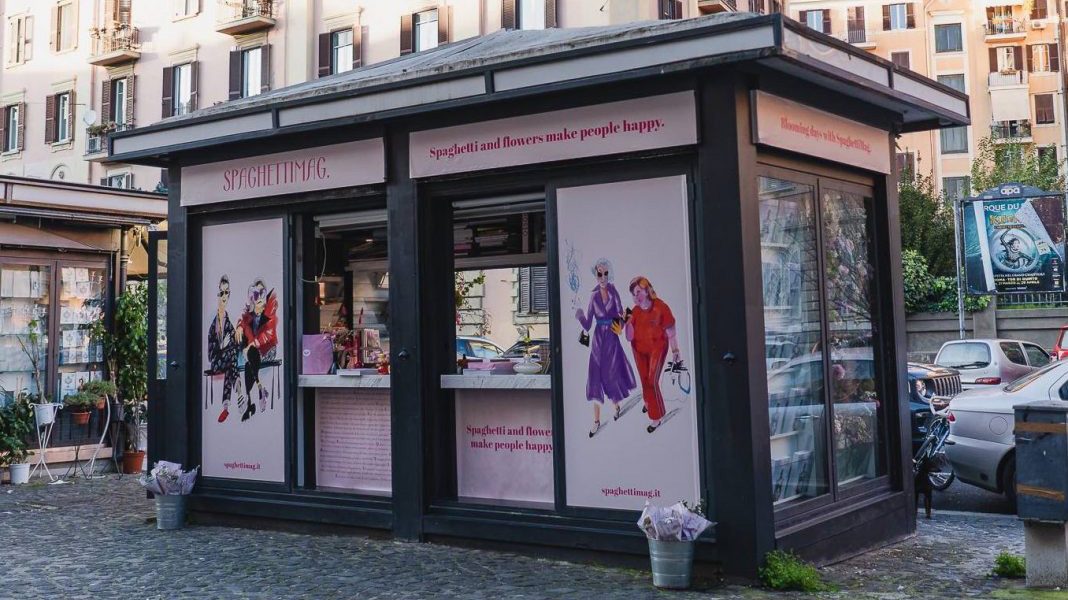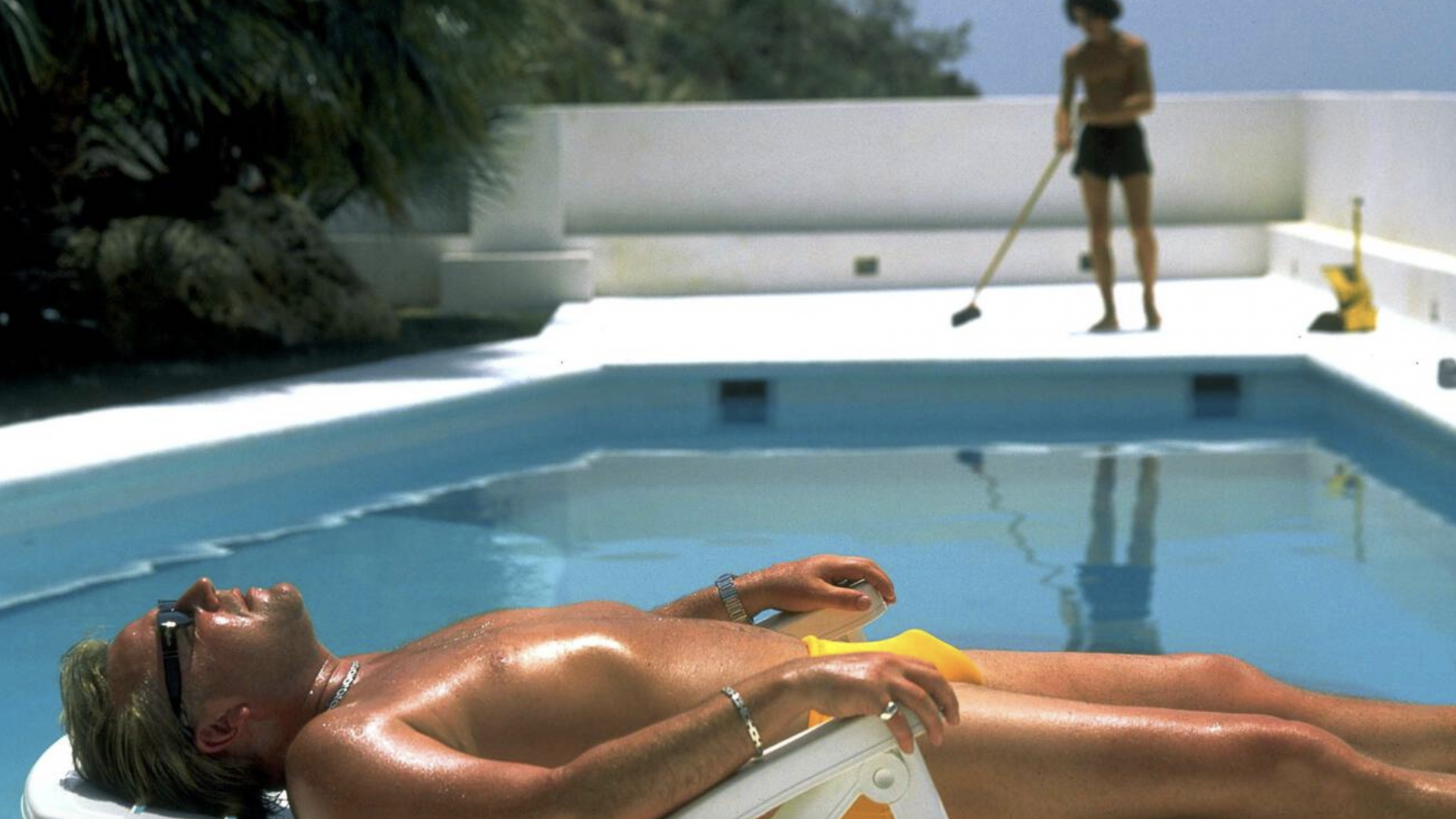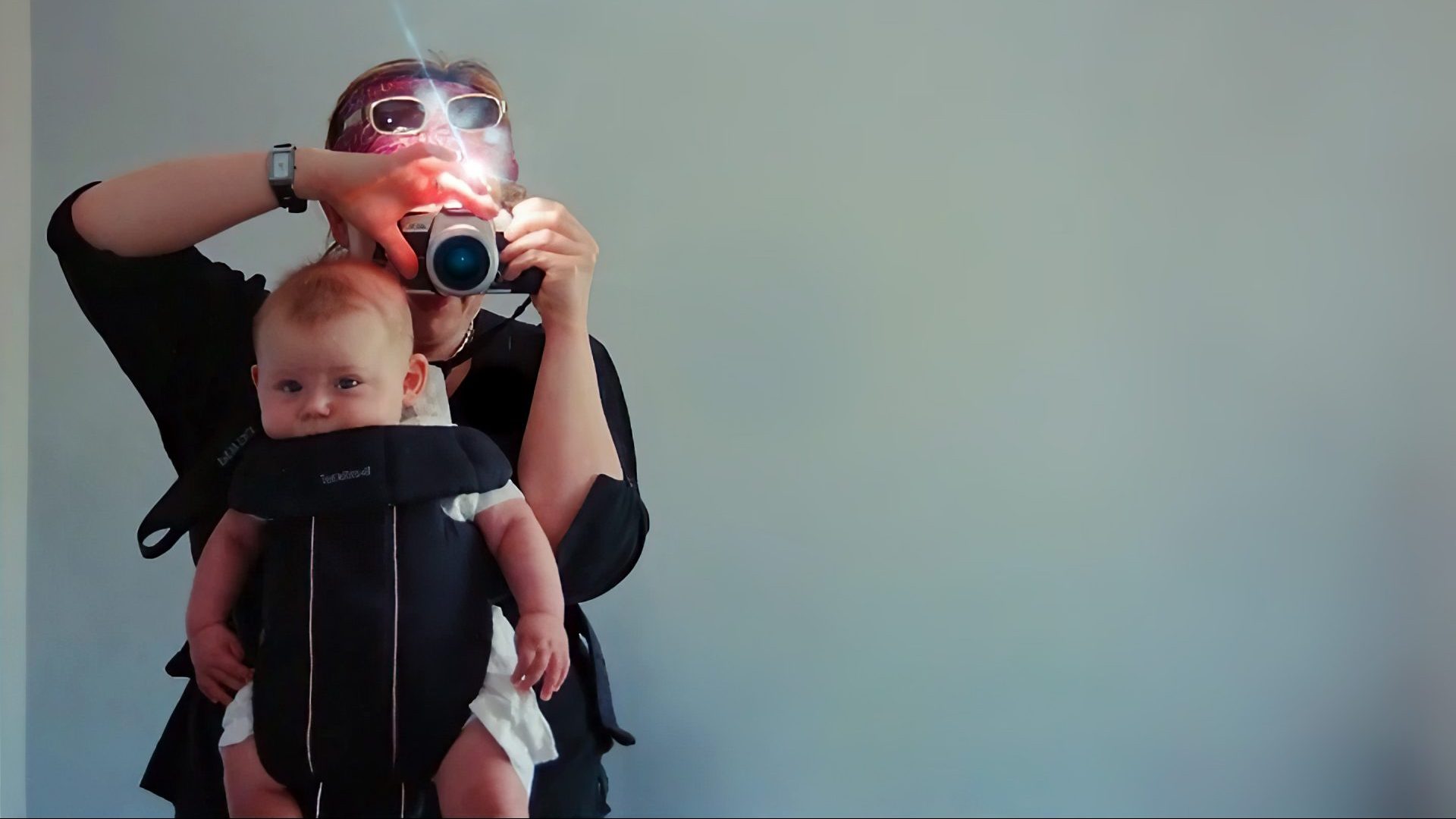Just minutes away from Rome’s landmark St Peter’s Square is a newsstand that offers a twist on the characteristic Italian icon. On a balmy Thursday afternoon, lace-embroidered shorts with drawstring waists, cinched with pink clothes pins, hang from a line extended across the booth’s front, while magazines on culture, fashion and architecture in bright hues of bubblegum pink and royal blue deck its glass shelves.
This is not the typical newsstand, or edicola, as the Italians call it, which could be said to be as much a symbol of Italy and Rome as an espresso slugged back at the counter of an unvarnished bar. Instead, this is Edicola Erno, a venture founded by Romans Andrea Mercuri and Valentina Chiani in 2019 – its premise is built into its very name, which stands for Edicola Romana Non Ordinaria.
Mercuri and her business partner decided to purchase an abandoned newsstand in 2019, envisioning the project as something of an urban redevelopment for a piece of the city they saw as ripe for improvement and modernisation. In many ways, the same could be said for the edicola.
In the 1960s and 70s, Mercuri noted, the edicola in Italy was a central meeting place for the neighbourhood, much like the local bar. Newsstands were a viable economic business as well as a social enterprise. But in the last 20 years, their number has more than halved – from 36,000 to 11,000. From 2019 to 2024, almost 2,700 newsstands closed, and roughly 25% of Italian cities have no newsstands at all.
Part of this, of course, can be attributed to the declining interest in print, which is why Mercuri and Chiani wanted to revolutionise the products on offer, showcasing indie and niche magazines. But at a certain point, they realised that the rectangular structure with prominent promotional real estate also had real potential as a display case for emerging brands.
That idea really took off in 2021, when Edicola Erno hosted its first pop-up with Italian-made makeup brand Espressoh. From there, interest only grew, attracting bigger fashion houses like Jil Sander, Emporio Armani and Uniqlo.
Suggested Reading


The crisis in Italy’s schools
“Our aim is to show Italian brands, but also international ones, as long as they are emerging brands that are willing to put themselves out there,” Mercuri said. “But at the same time, we’re able to collaborate with more established businesses.”
The pop-up schedule is already finalised through to roughly the end of December, and 2026 is already under discussion, Mercuri said. And that’s a surprise to no one more than the founder, who wasn’t sure she should quit her day job at the edicola’s birth.
“I definitely thought, ‘I’ll have to keep doing something else, working in my field, because this place won’t pay the bills, it won’t give me what I need to support myself financially,’” she said. “Instead, it was a huge surprise and it keeps me very busy.”
While Mercuri credits Edicola Erno with inventing the pop-up-in-edicola concept in Italy, if not internationally, it’s certainly not the only attempt to revolutionise the newsstand within the country. In Florence, owners of the independent bookstore Todo Modo recently purchased an edicola to transform it into Periodico 11:11, something of a cultural hub. Milan’s Aedicola Lambrate is home to book presentations and lectures. The edicola as a revitalised social and cultural space is alive and well in various Italian cities.
And yet what perhaps makes Edicola Erno so special is its placement in a city that has always been a little resistant to the passage of time, that has always insisted on leaving one foot planted firmly in the past.
“Rome is a city that wants to stop at the right point,” Mercuri said. “So we try to create new activities to stimulate new ideas, to accept diversity, to make sure that everyone in the various Italian cities can feel comfortable and at home, but it’s also good to respect traditions.”
That is the impossible balance of Edicola Erno: to embrace modernity in a city that has always demanded acknowledgment for the people and the places that came before. In Mercuri’s case, it seems to have paid off: “Many tell me it was what the city needed.”
Elizabeth Djinis is a Rome-based writer and journalist



